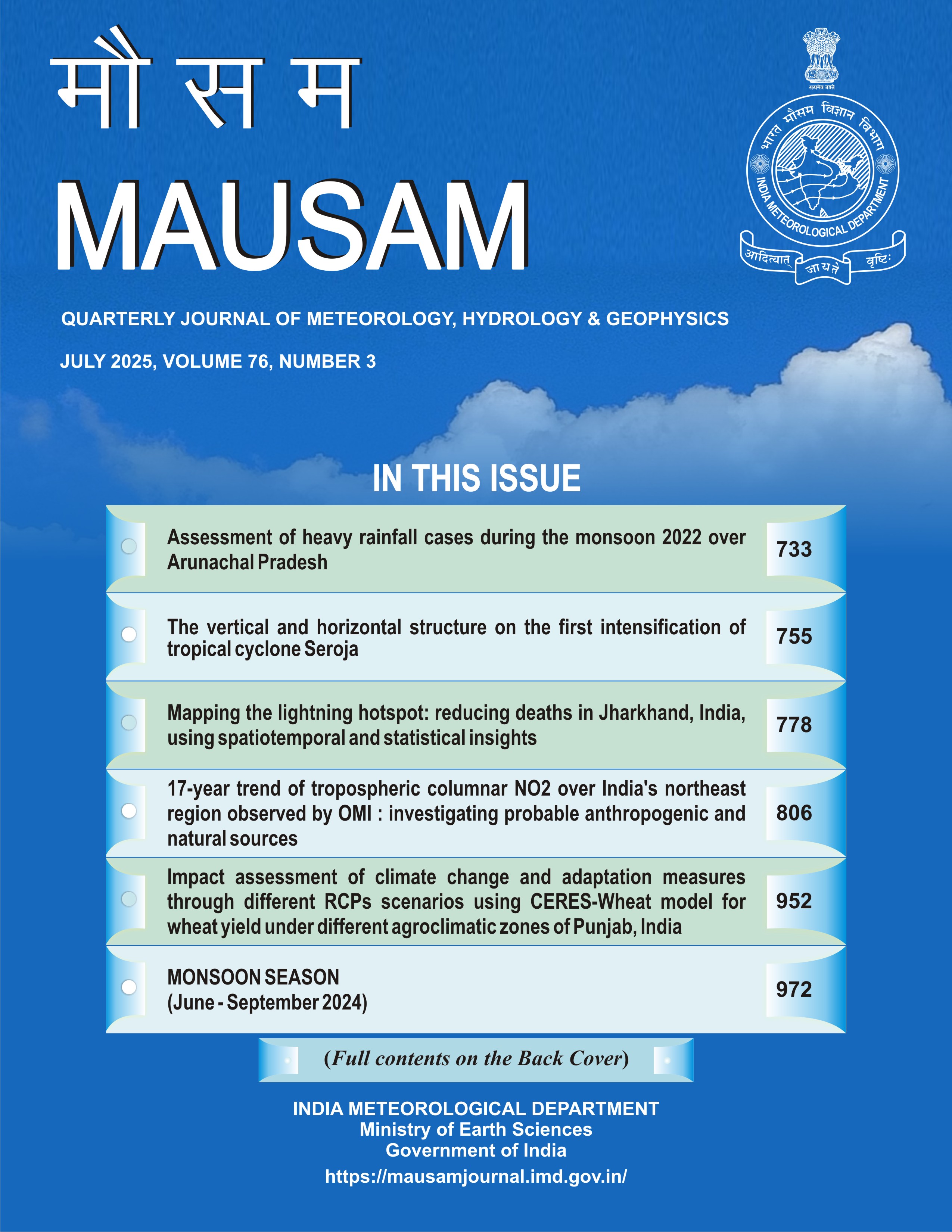Soil temperature prediction in the upper Gangetic Plain of India using a data-driven approach
DOI:
https://doi.org/10.54302/mausam.v76i3.6805Abstract
Soil temperature plays a crucial role in determining the kinetics and fate of physicochemical and biological processesinfluencingcrop growth and development. Soil temperature regimes based sustainable intensification of agricultural systems is needed for climate resilience. The present study involved prediction of soil temperature from the air temperature at the ICAR-Indian Institute of Sugarcane Research located in the upper Gangetic Plains of India. The data-driven empirical regression models were identified for prediction of soil temperature at 5, 10 and 20 cm depths. The power model was found the best fit for predicting daily, weekly and monthly morning soil temperature at all three depths, with the exception of exponential model, found best for weekly temperature at 20 cm. Further, power model was the best fit for daily, weekly and monthly afternoon soil temperature predictions at 10 and 20 cm. However, exponential model was the best fit for daily, weekly and monthly afternoon temperature at 5 cm depth. The minimum air temperature was most suitable for predicting morning soil temperature whereas the maximum air temperature for afternoon soil temperature. The power model also served as the best-fit for soil temperature prediction at 10 and 20 cm through the use of soil temperature at 5 cm depth. The accuracy of the best-fit regression models ranged from 97.1 to 99.1%. The present work offers appropriate models for predicting soil temperature based on ambient air temperature. The findings will be useful for researchers, policy makers and farmers to help mitigate climate change impacts on agriculture.
Downloads
Published
How to Cite
Issue
Section
License
Copyright (c) 2025 MAUSAM

This work is licensed under a Creative Commons Attribution-NonCommercial 4.0 International License.
All articles published by MAUSAM are licensed under the Creative Commons Attribution 4.0 International License. This permits anyone.
Anyone is free:
- To Share - to copy, distribute and transmit the work
- To Remix - to adapt the work.
Under the following conditions:
- Share - copy and redistribute the material in any medium or format
- Adapt - remix, transform, and build upon the material for any purpose, even
commercially.



